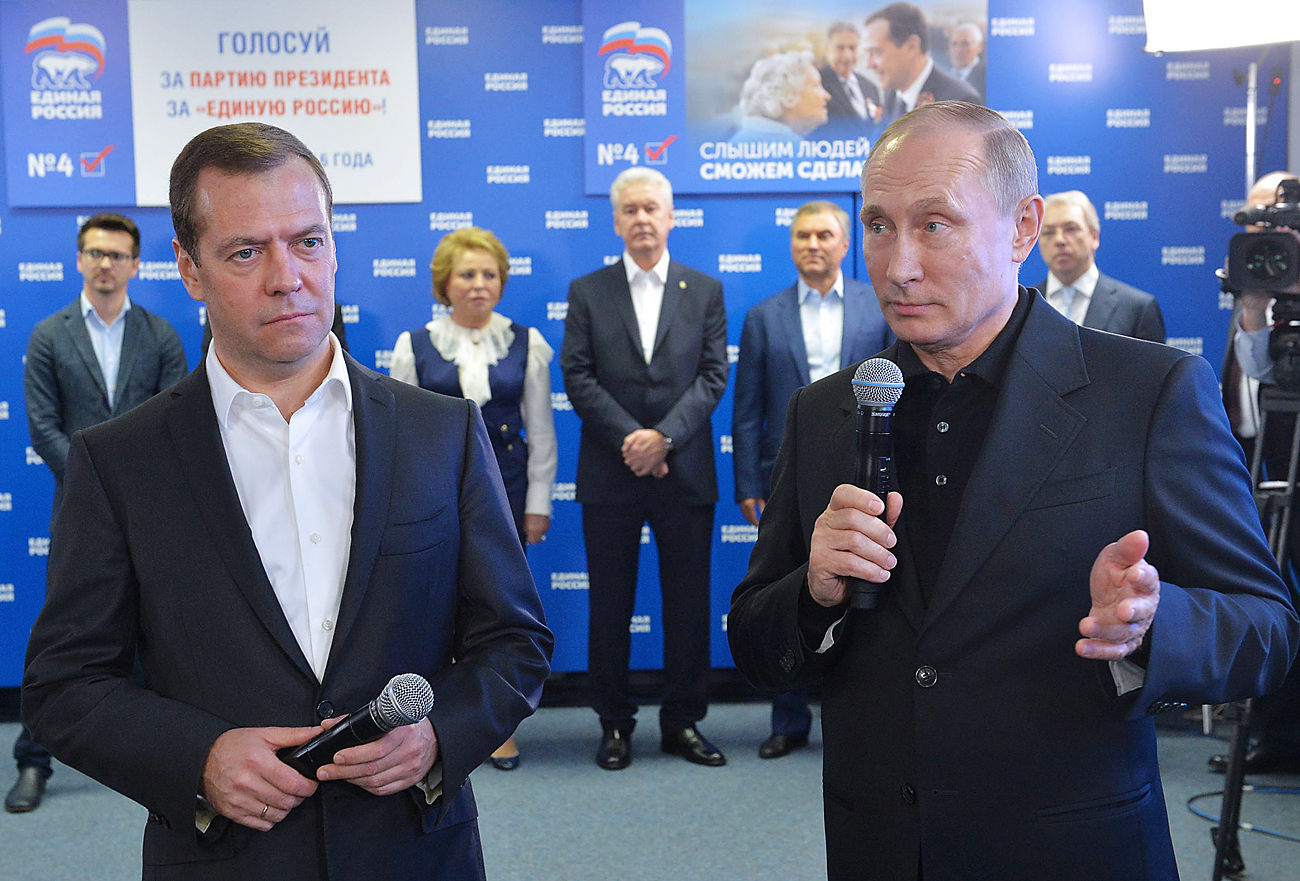Ruling party wins huge majority in Russian parliamentary elections

United Russia Party Chairman, Russia's Prime Minister Dmitry Medvedev and Russia's President Vladimir Putin visit the United Russia Party campaign headquarters after the 2016 Russian parliamentary election, Sept. 18.
Alexei Druzhinin/Russian Presidential Press and Information Office/TASSAccording to preliminary estimates, the ruling United Russia party has won the Sept. 18 parliamentary elections by a landslide margin, receiving 54.23 percent of the vote, which gave it at least two thirds of the seats and a constitutional majority in the State Duma. It looks almost certain that United Russia will have more than 76 percent of seats in the lower house.
For the first time since 2003, MEPs have been elected for a new five-year term according to a mixed electoral system: 225 seats are allocated according to party lists, and the other 225 are filled by single-seat constituencies. United Russia has also won the vast majority of single-seat constituencies; its representatives were in the lead in 203 of 225 constituencies.
The main intrigue is the status of the second largest faction in the lower house of parliament: it can go either to the Communist Party of the Russian Federation (CPRF) or the nationalist Liberal Democratic Party of Russia (LDPR). According to preliminary calculations, they received almost equal number of votes – 13.65 percent and 13.39 percent, respectively. The fourth party to enter the parliament is A Just Russia, which won 6.16 percent.
The results mean it is already clear that the seventh incarnation of the State Duma will be formed of the same four parties that sat in the previous two. Ten other parties failed to get over the five-percent threshold needed to enter parliament. The democratic Yabloko party won 1.69 percent, business ombudsman Boris Titov’s Party of Growth received 1.07 percent, while the right-wing liberal opposition Parnas party led by former Russian Prime Minister Mikhail Kasyanov got less than 1 percent of the vote.
"People have shown good citizenship," said Russian President Vladimir Putin, commenting on the elections, for which turnout is estimated at 47.81 percent. "This can also be seen in the turnout – it is not the largest of what we have seen during the previous election campaigns, but it is high. The result is good."
The comment by Central Electoral Commission head Ella Pamfilova was shorter: "The turnout was pretty standard," she said at a briefing. In 2011, the turnout was 60.2 percent, in 2007 – 59 percent.
Unlike in 2011, when allegations of widespread vote-rigging resulted in large street protests against the government across the country, reports of irregularities and vote-tampering were relatively few on this occasion and were limited to several regions. Pamfilova declared that the elections were “legitimate.”
Read more: Kadyrov leading with 98% in Chechnya elections>>>
Subscribe to get the hand picked best stories every week
All rights reserved by Rossiyskaya Gazeta.
Subscribe
to our newsletter!
Get the week's best stories straight to your inbox
